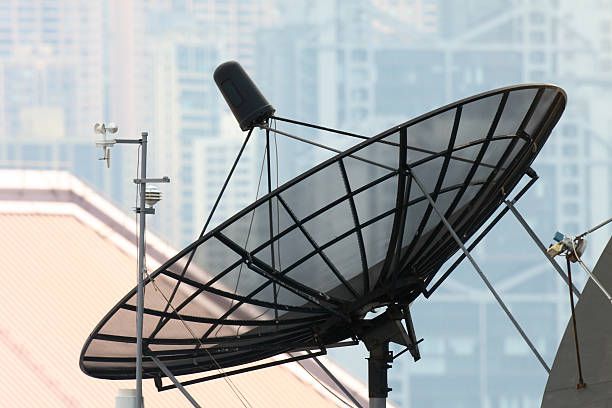
Send Inquiry
Everything You Need to Understand Regarding Parabolic Reflector Antennas
Understanding Parabolic Reflector Antennas
Parabolic reflector antennas, often simply called parabolic antennas, are sophisticated devices designed to transmit and receive electromagnetic signals efficiently. Their distinctive parabolic shape and strategic placement of components enable them to capture and focus signals with precision.
Characteristics and Design Principles
Parabolic antennas derive their efficiency from their unique shape, which is mathematically determined to ensure optimal signal capture and reflection. Key components include the reflector, which acts as a curved surface to redirect signals, the feed antenna positioned at the focal point, and the mount that supports and positions these elements for effective communication.
Types of Parabolic Antennas
- Front-fed or Axial Parabolic Antenna: This common type features a feed antenna placed directly in front of the parabolic reflector, optimizing signal capture and transmission efficiency.
- Offset Parabolic Antenna: In this design, the feed antenna is positioned to the side of the parabolic reflector, minimizing signal blockage and improving overall performance.
- Cassegrain Antenna: This variant incorporates a secondary reflector placed at the focus of the parabolic reflector, enhancing signal focusing and directing capabilities for specific applications.
Working Principle and Applications
Parabolic reflector antennas function by converting incoming electromagnetic waves and focusing them onto a specific point. This focusing mechanism ensures efficient signal transmission and reception over long distances, making them indispensable in various communication systems.
Applications across Various Industries
Parabolic reflector antennas find extensive use across diverse industries due to their versatility and effectiveness in signal transmission and reception:
- Satellite Communication: These antennas are integral to satellite ground stations, facilitating the uplink and downlink of data for seamless communication between satellites and ground stations.
- Microwave Communication: Parabolic antennas excel in communicating with microwave signals, serving industries reliant on secure and reliable long-distance data transmission.
- Radar Systems: In radar applications, these antennas aid in identifying objects and determining their distance, crucial for navigation and surveillance in aircraft, maritime vessels, and other vehicles.
- Television and Radio Broadcasting: Large parabolic antennas are instrumental in broadcasting television and radio signals, ensuring widespread coverage and clear reception for viewers and listeners.
- Military and Defense: Parabolic antennas are deployed in military and defense operations for surveillance, reconnaissance, and communication, leveraging their directional capabilities and long-range transmission.
Advantages and Disadvantages
Advantages
- High Gain: Parabolic antennas offer high gain, allowing for focused signal transmission and reception, ideal for establishing strong connections over considerable distances.
- Long-range Communication: Their efficiency in directing signals enables long-range communication, essential for applications such as satellite communication and radio astronomy.
- Narrow Bandwidth: With a narrow bandwidth, parabolic antennas minimize interference from other signals, ensuring stable and reliable communication even in crowded frequency environments.
- Versatility: These antennas are versatile, finding application across various industries ranging from telecommunications to aerospace, thanks to their adaptable design and functionality.
- Cost-effectiveness: Despite their advanced capabilities, parabolic antennas offer cost-effective solutions for long-distance communication needs, making them a preferred choice in many systems.
Disadvantages
- Directionality: The directional nature of parabolic antennas limits their ability to transmit signals in multiple directions simultaneously, requiring precise positioning for optimal performance.
- Limited Coverage Area: Due to their focused beam pattern, parabolic antennas have a limited coverage area, which may necessitate the use of multiple antennas for broader coverage.
- Large Size and Maintenance Requirements: Some parabolic antennas are large and require specialized maintenance and installation, posing logistical challenges, especially in space-constrained environments.
Recent Developments and Future Trends
Advances in Materials and Manufacturing Technologies
Recent advancements in materials science and manufacturing technologies have revolutionized the design and production of parabolic reflector antennas. Innovations in lightweight yet durable materials have led to the development of smaller, more efficient antennas with enhanced performance characteristics.
Emergence of Phased Array Technology
Phased array technology has emerged as a promising alternative to traditional parabolic antennas. By electronically steering the beam direction, phased arrays offer faster and more flexible communication capabilities. This technology enables dynamic beam shaping and adaptive signal processing, catering to evolving communication needs.
Potential Impact on the Future of Parabolic Antennas
The integration of advanced materials and phased array technology is poised to redefine the future of parabolic antennas. These developments promise increased efficiency, reduced size and weight, and enhanced adaptability, paving the way for their continued relevance in modern communication networks.
Conclusion
Parabolic reflector antennas have played a pivotal role in enabling long-distance communication across various industries. Their high gain, directional capabilities, and versatility make them indispensable in satellite communication, radar systems, and more. As we continue to push the boundaries of wireless communication, there is immense potential for further exploration and utilization of parabolic reflector antennas. By embracing new materials, technologies, and applications, we can harness the full capabilities of these antennas to meet the evolving demands of our interconnected world.

